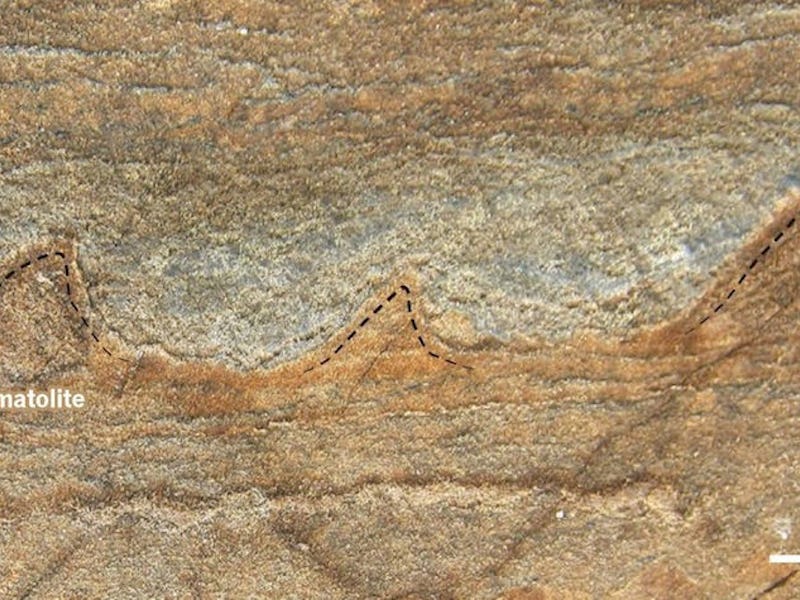Scientists Just Found the Oldest Fossils of Life on Earth
3.7 billion years is a very, very long time.

The story of life on Earth got shook up today, thanks to strange patterns found in 3.7 billion-year-old rocks from Greenland. If the discovery holds up to scrutiny, which will surely come, these will be the oldest fossils ever found.
Scientists believe that the small, cone-shaped features in the stone are stromatolites — the fossilized remains of complex microbial colonies that grow in shallow seas. In findings published in the journal Nature on Wednesday, the Australian research team concluded the fossils a solid 220 million years older than the currently accepted record holder (also stromatolites, from Australia). Regardless of how the scientific process plays out, these fossils will change the understanding of how early life took hold on this planet.
That’s because these stromatolites date from an age much earlier than many thought possible for such advanced lifeforms. If true, it means that either life jumped from very simple to relatively complex quite faster than previously thought possible, or life was established on this planet at a time when conditions were pretty inhospitable.
The time from Earth’s formation 4.6 billion years ago to 4 billion years ago is known as the Hadean eon — named for Hades, Greek god of the underworld, because of its hellish conditions. Back then, the planet would have been so hot that parts of the land would have been reduced to molten lava, and collisions between Earth and other space junk would have been incredibly frequent as the planet worked to clear its orbit.
From about 4.1 billion to 3.8 billion years ago, Earth went through the Late Heavy Bombardment: a time of elevated collisions with asteroids and meteors. Many suspect this period of the planet’s history would have violently obliterated any life present.
However, there is mounting evidence these days to suggest, somehow, life took hold before or during this brutal chapter. One study found biochemical signatures from 4.1 billion years ago, although many experts emphasize this does not amount to conclusive proof of life.
If life did indeed wait until the bombardment was over to take hold, then it grew up in a hurry. The microbial communities found in stromatolites seem simple from a human perspective, but compared to what must have been the first forms of life on the planet, they are extraordinarily complex.
So, did these complicated colonies arise from next to nothing within 100 million years, or was the Late Heavy Bombardment less cataclysmic than imagined?
Unfortunately, physical relics from a 4-billion-year-old Earth are hard to come by. Almost all of the rock dated to that age has since been eaten up and regurgitated by geological processes. That’s part of the reason this discovery in Greenland is so rare.
The new fossils are exciting for so many reasons. It’s fair to say that if there’s any new evidence out there waiting to be found, a lot of folks are already racing to find it first.